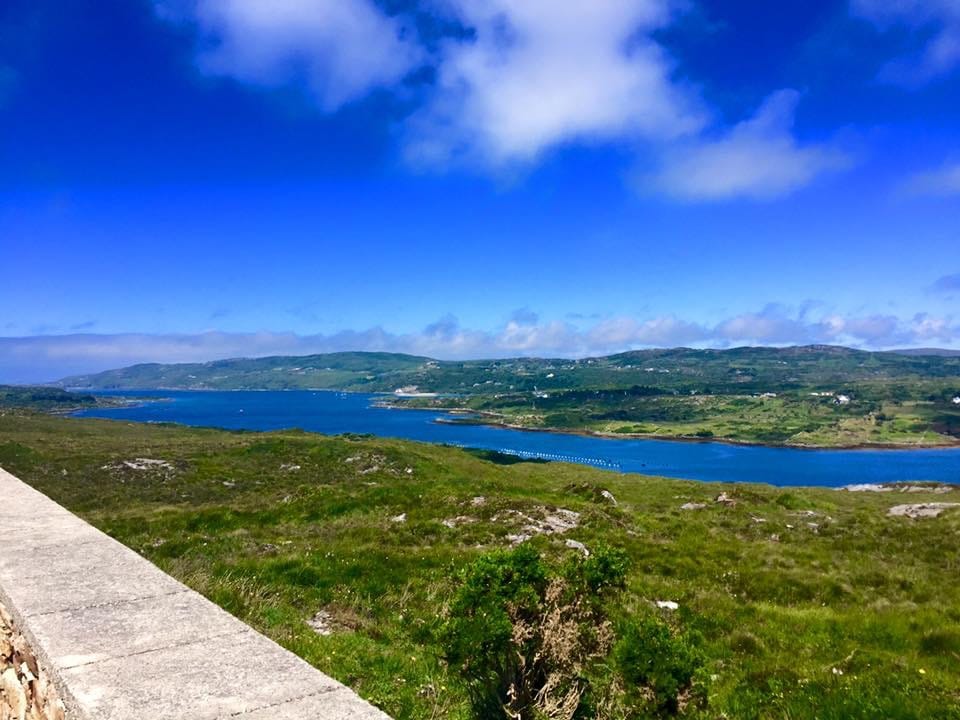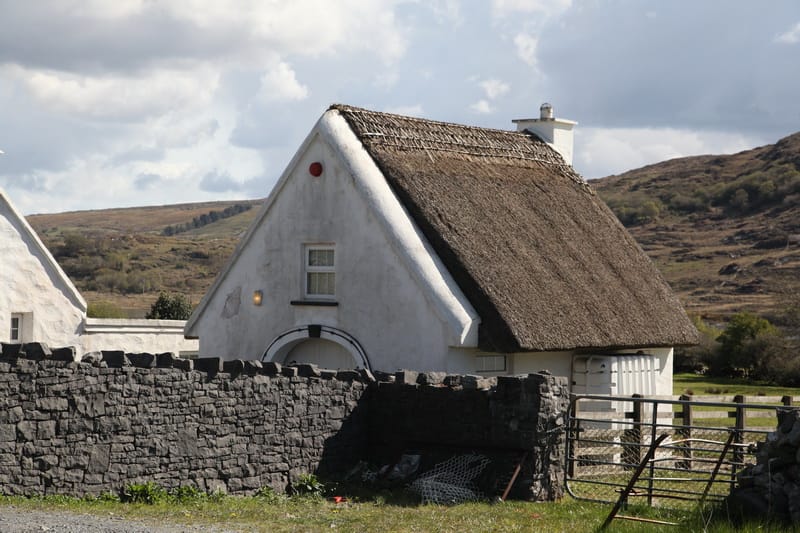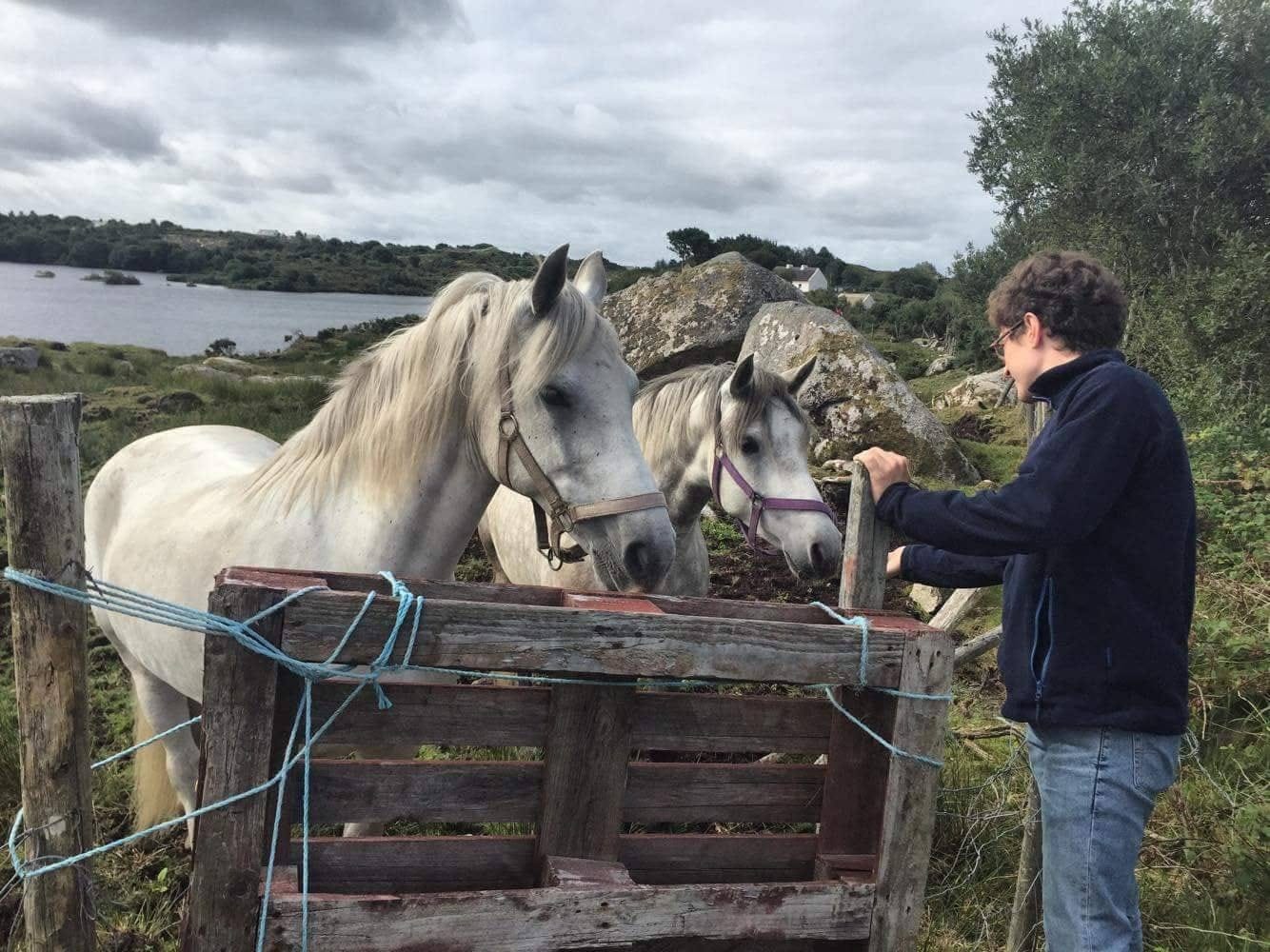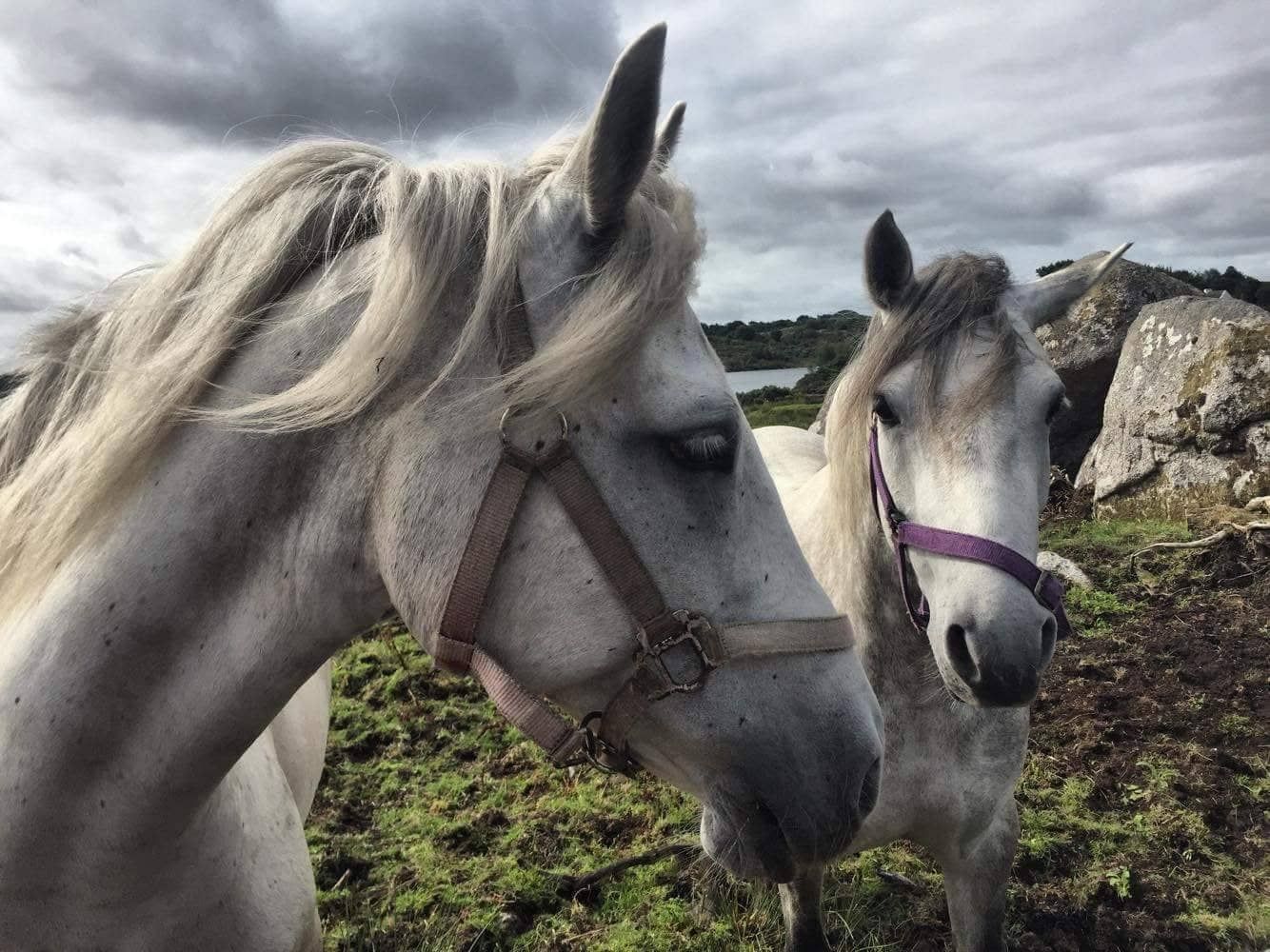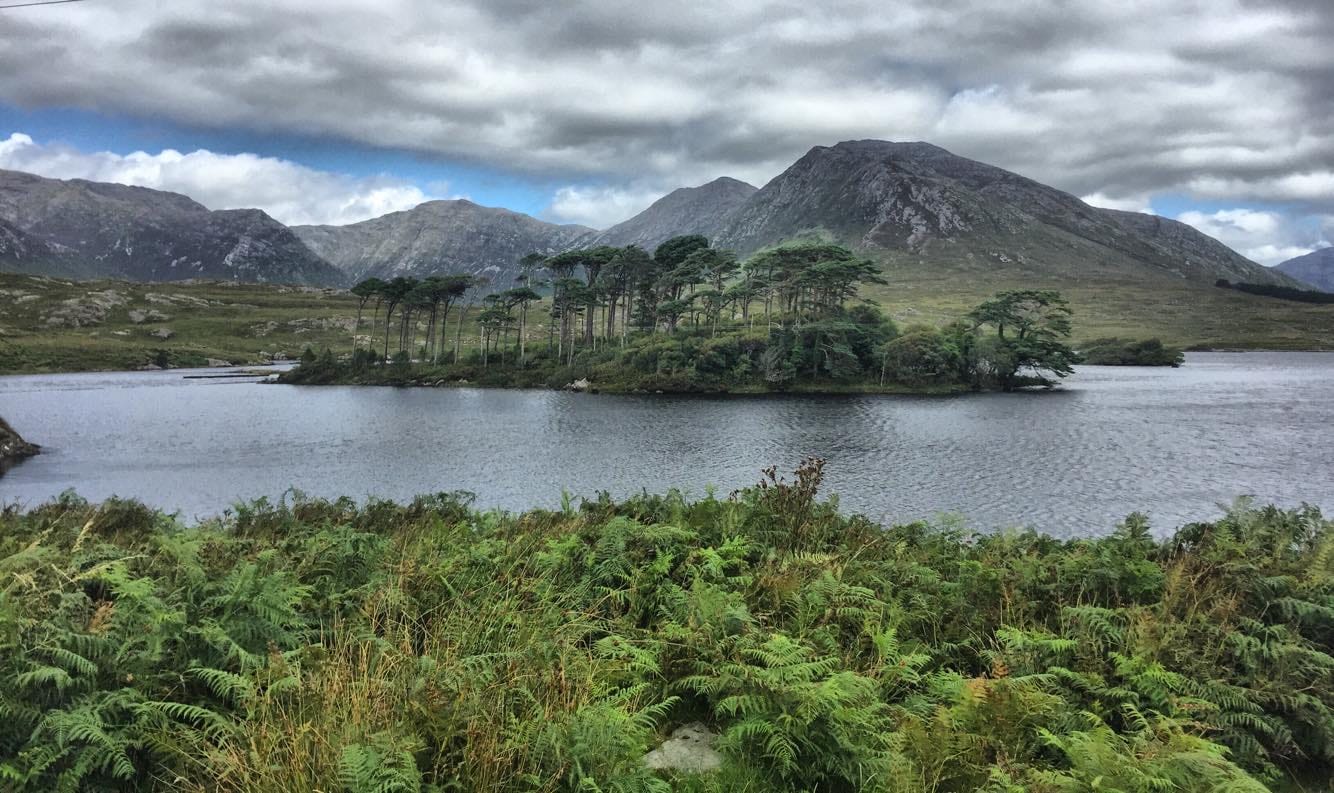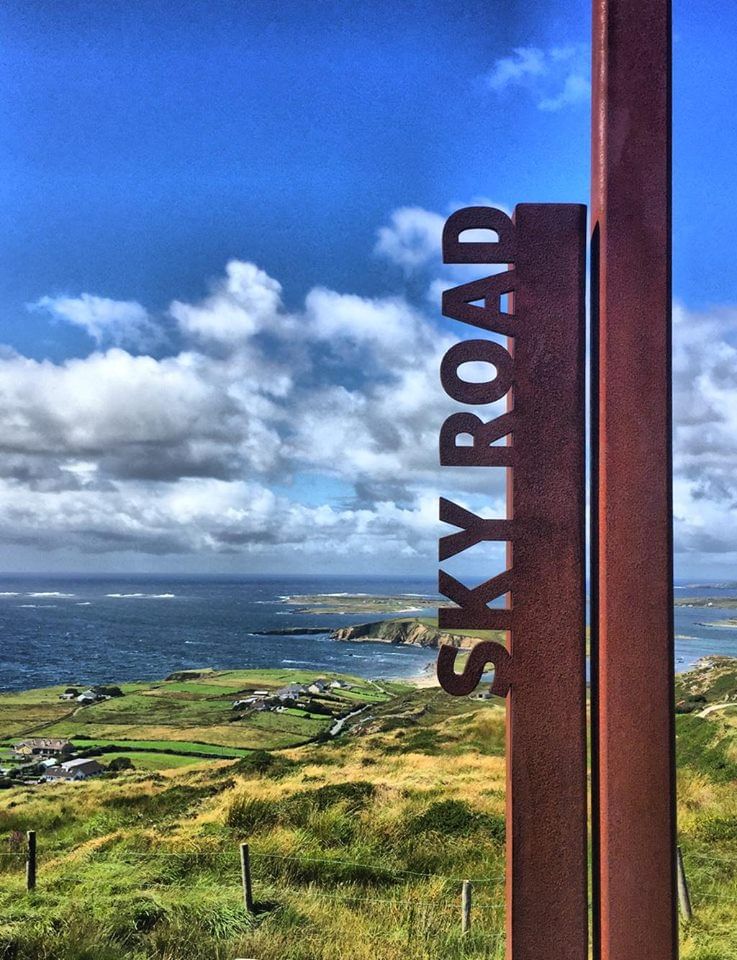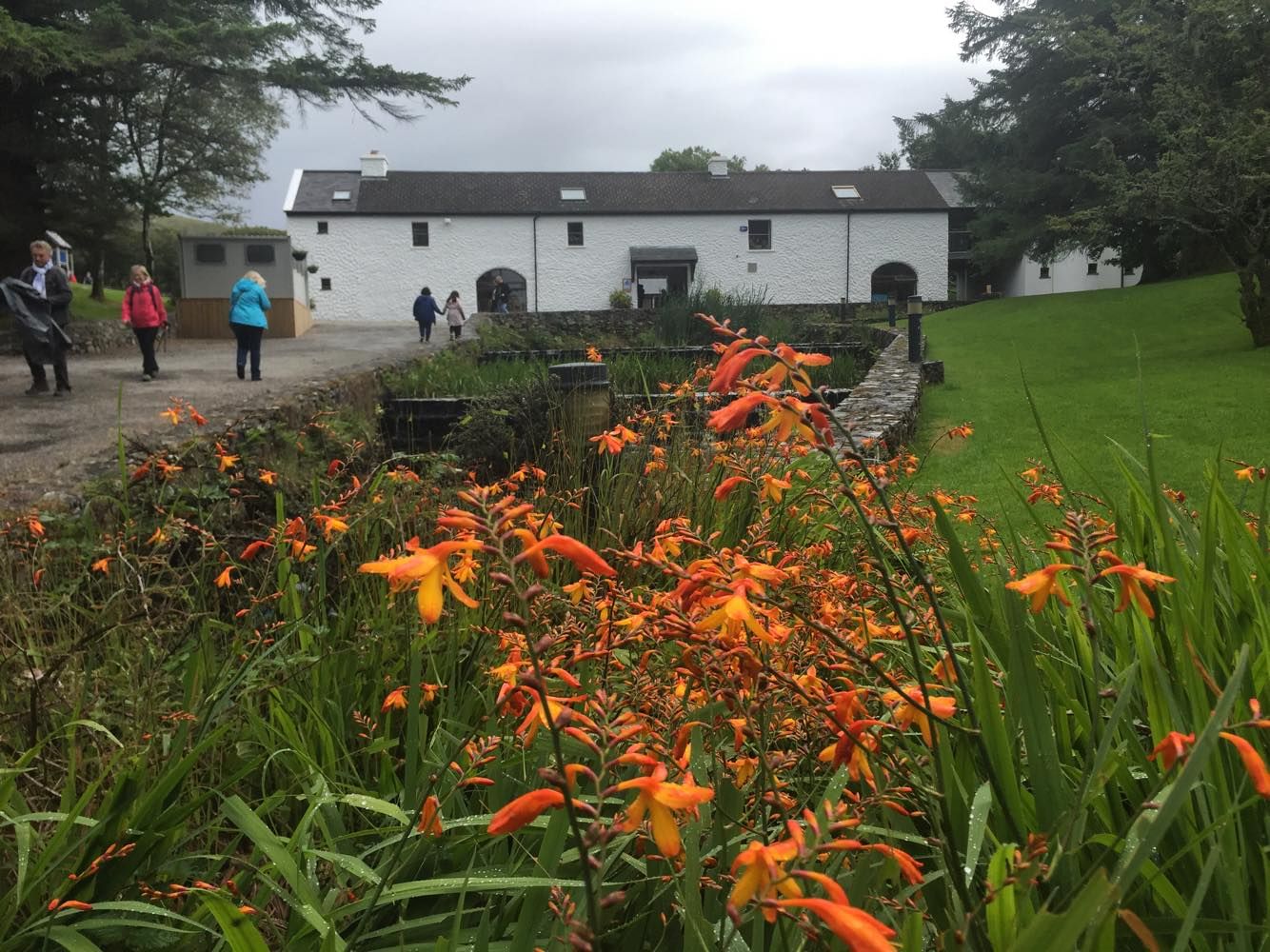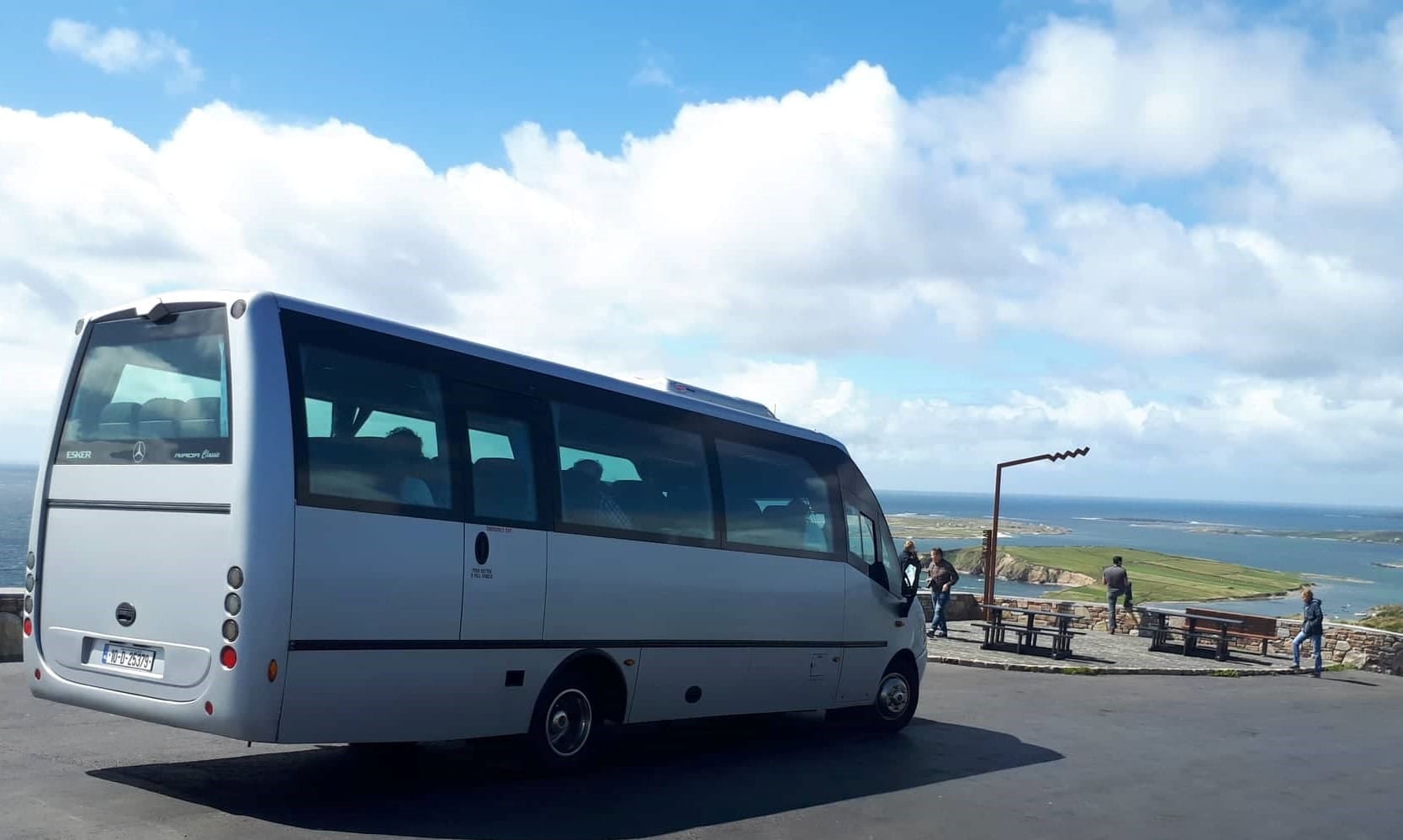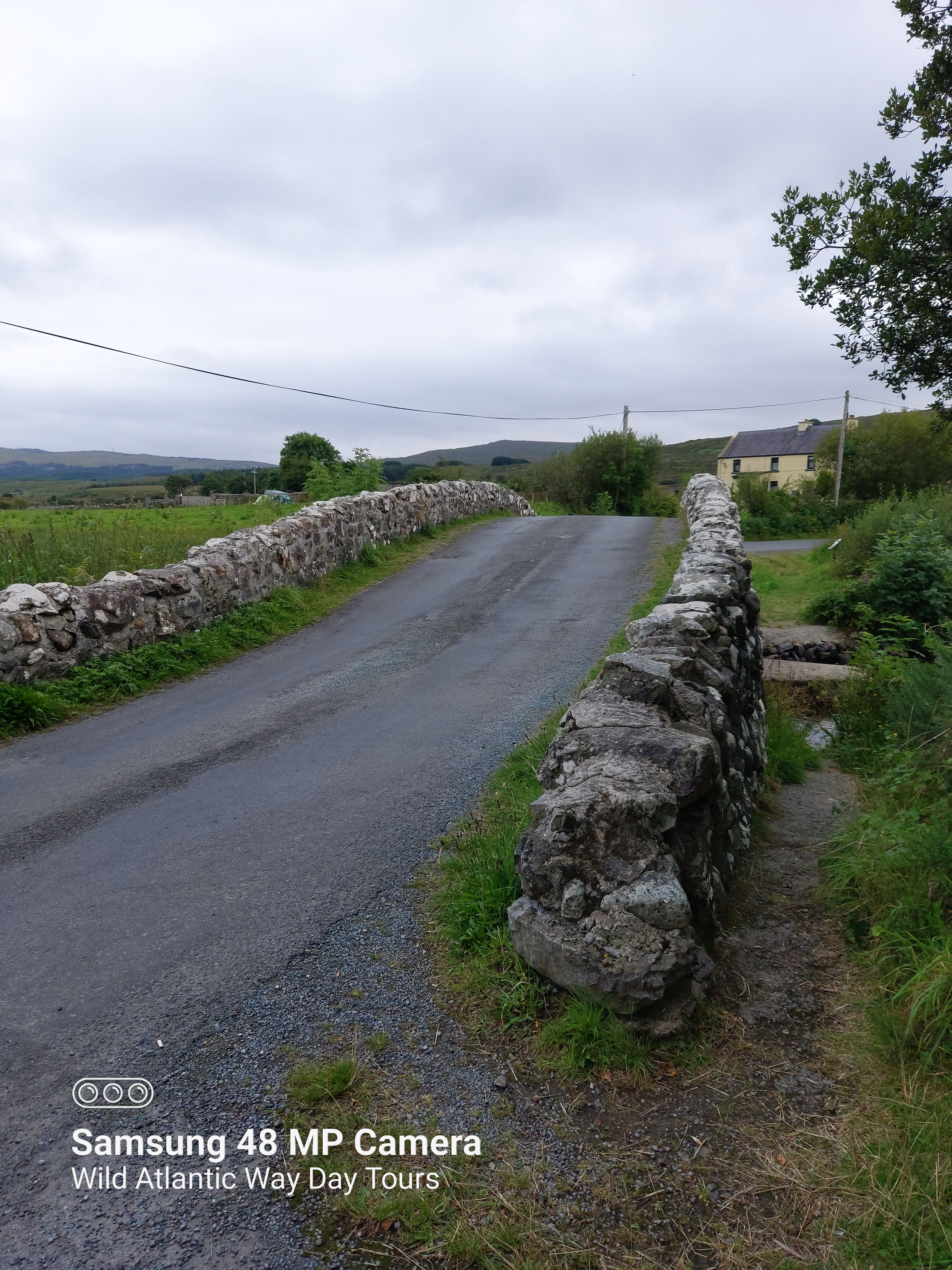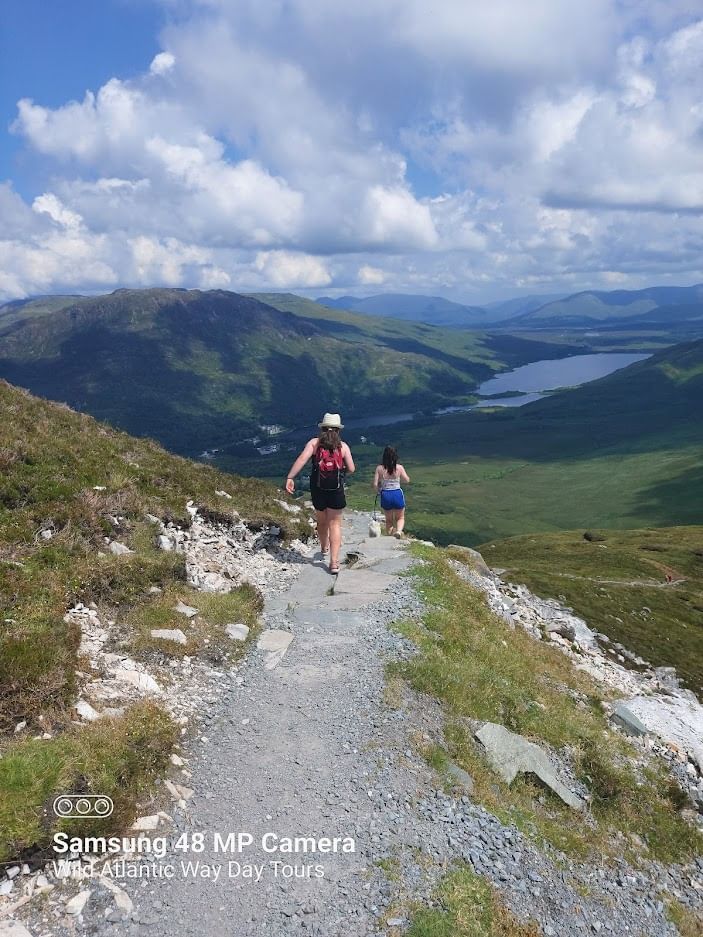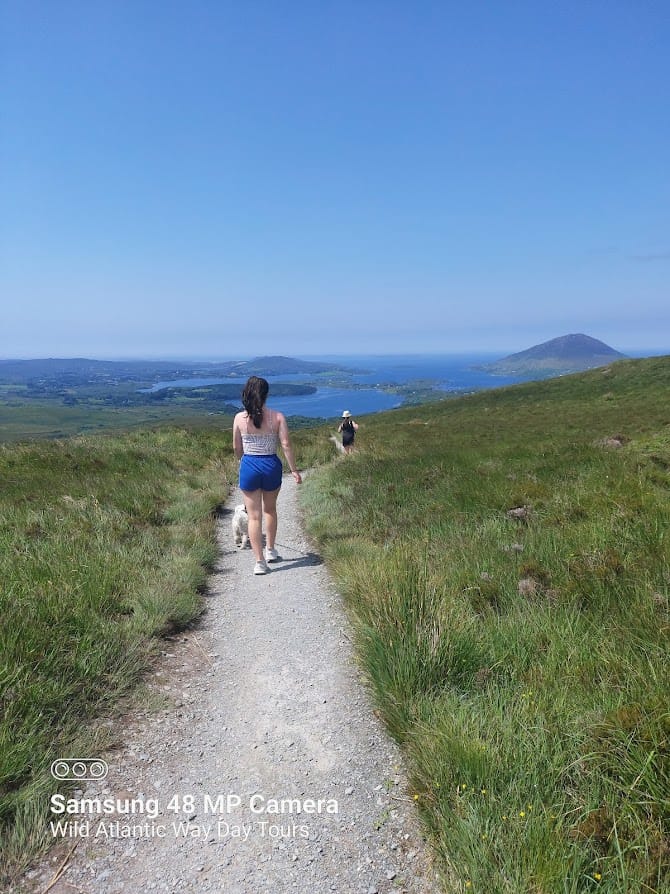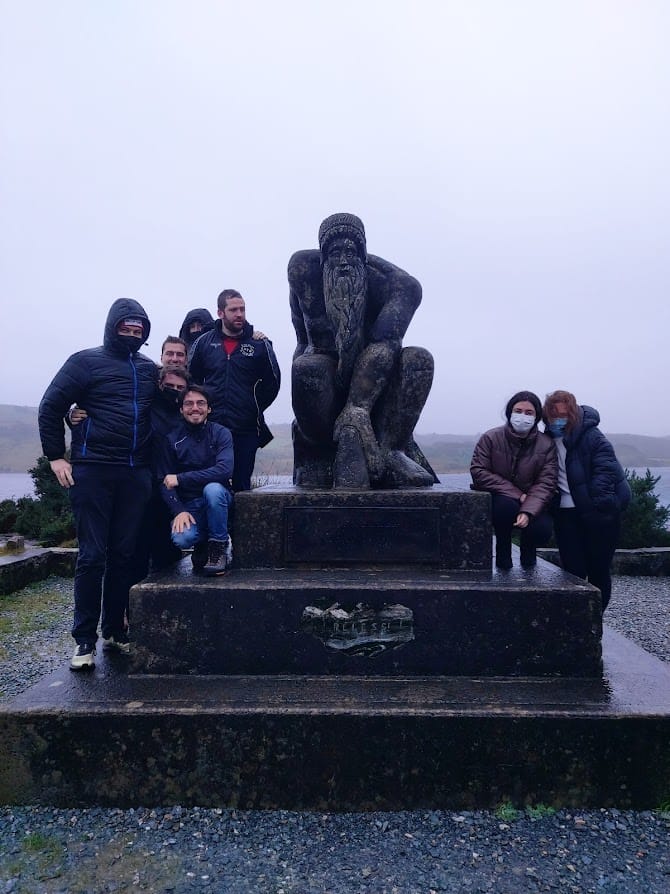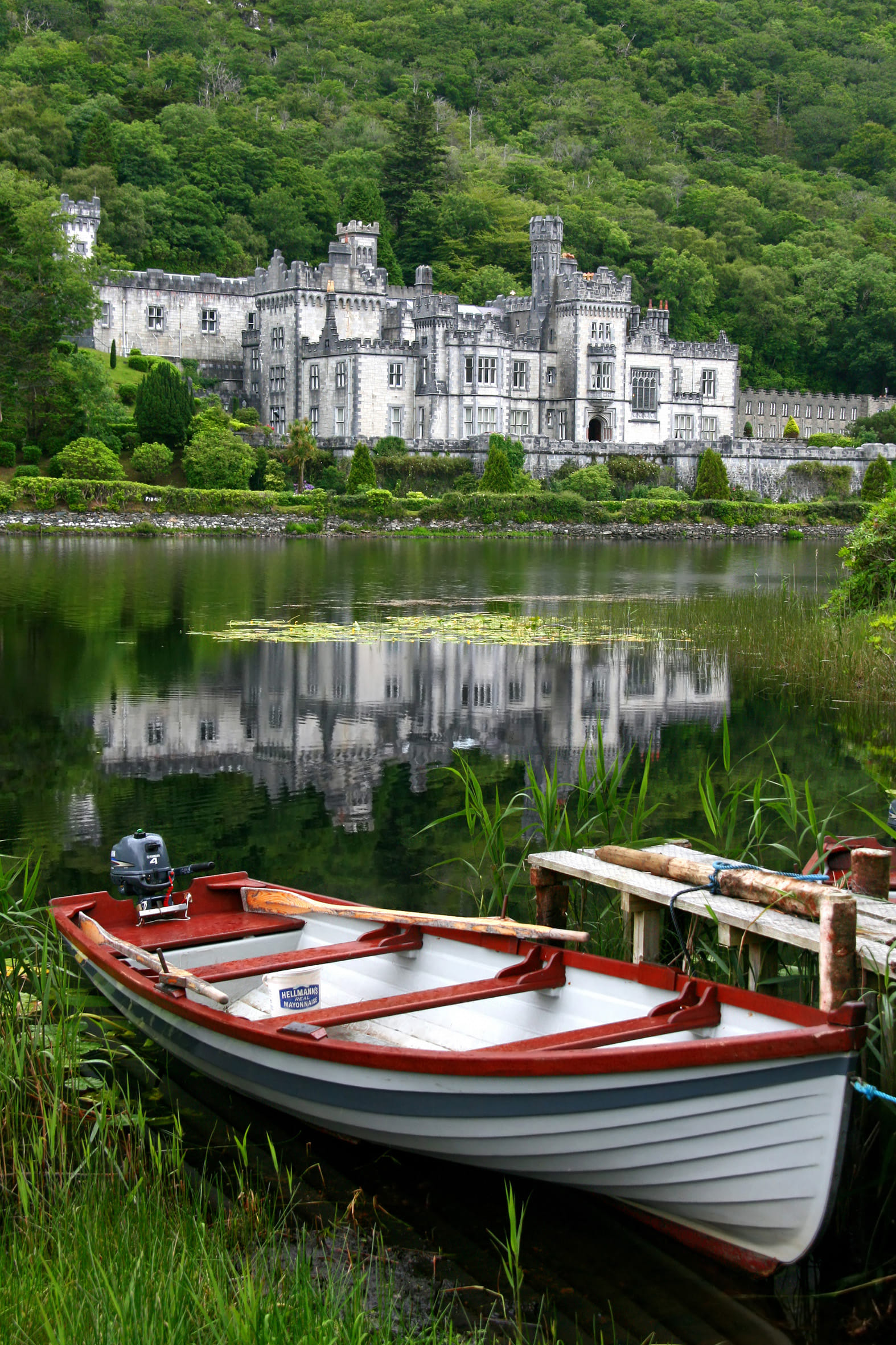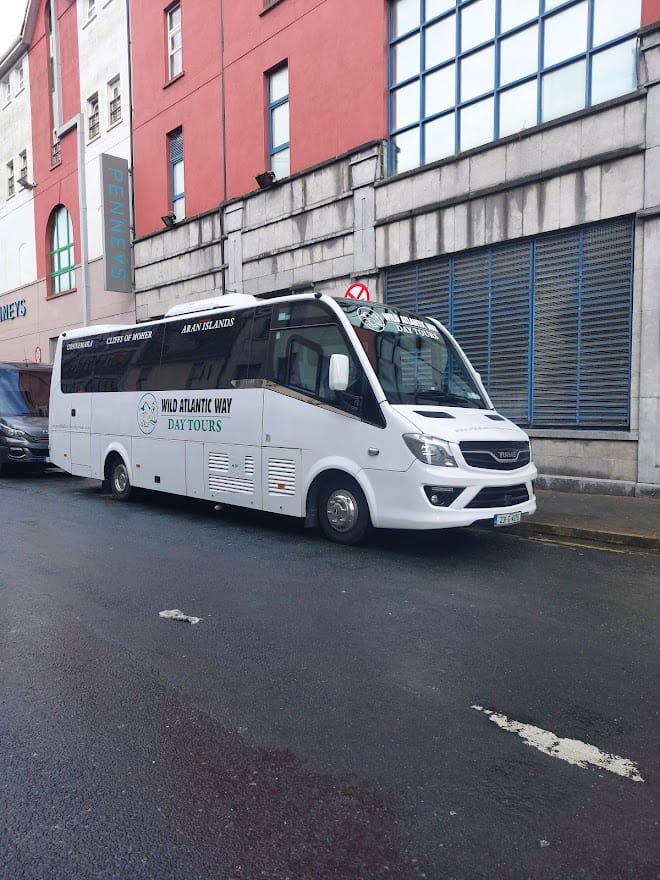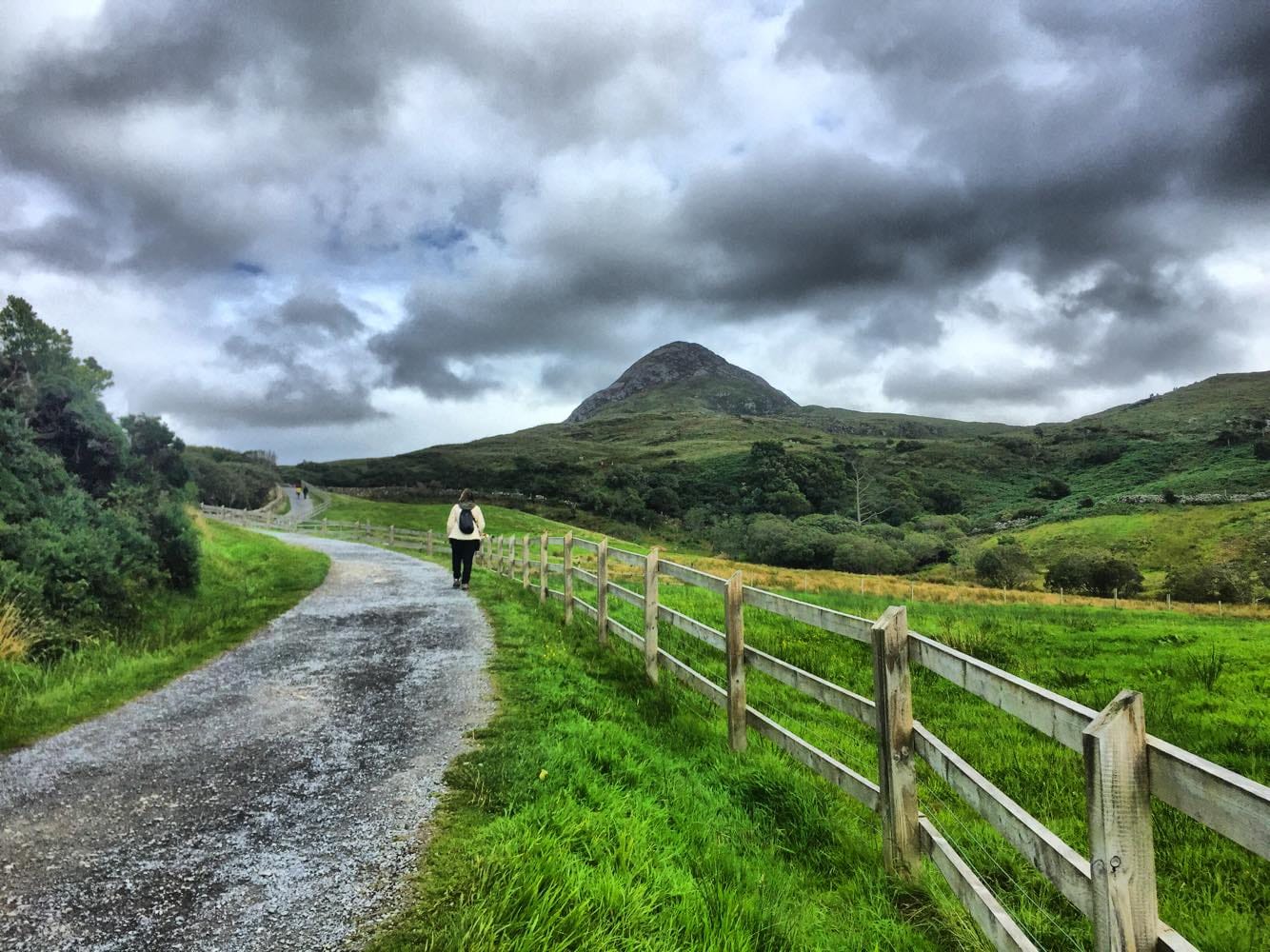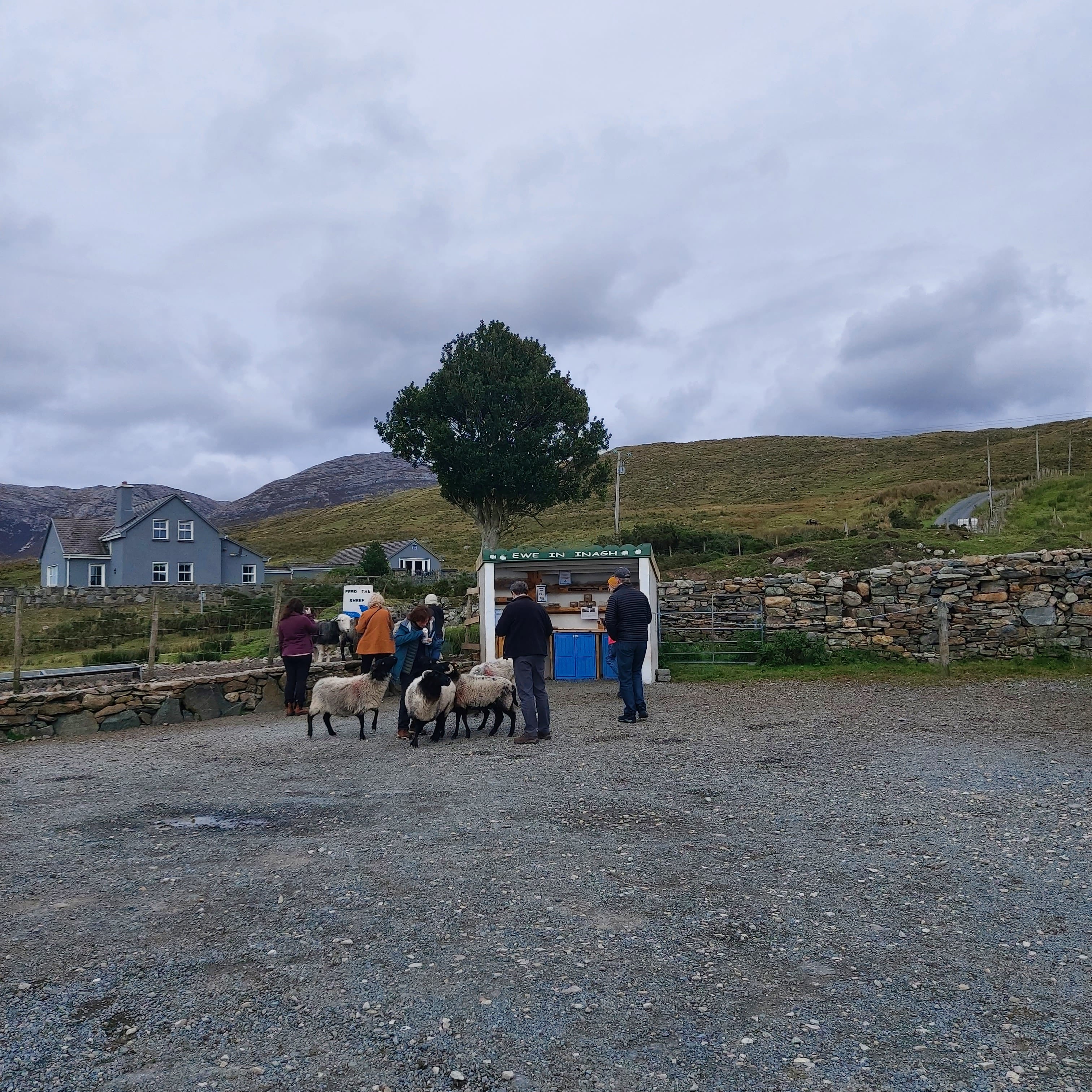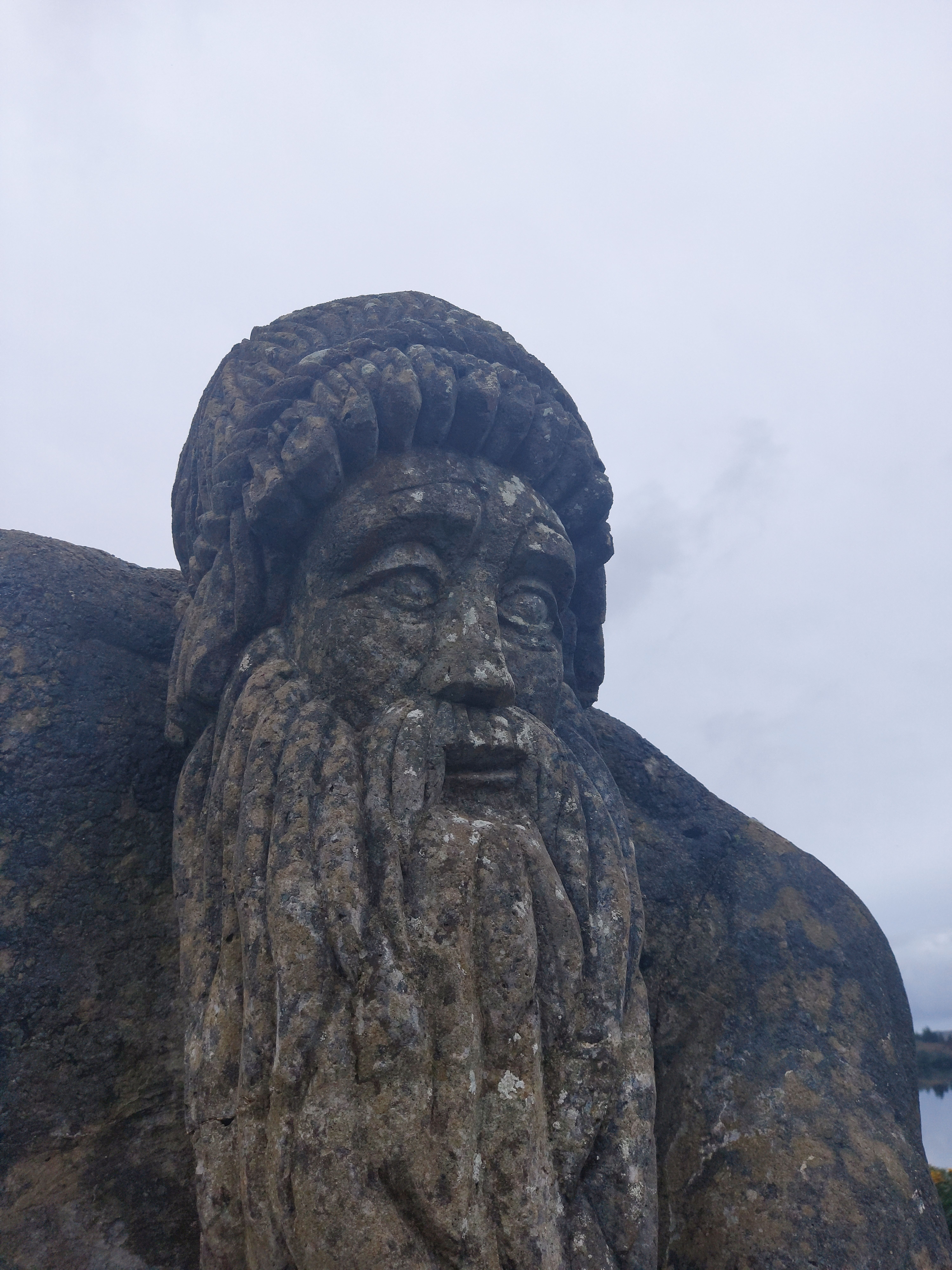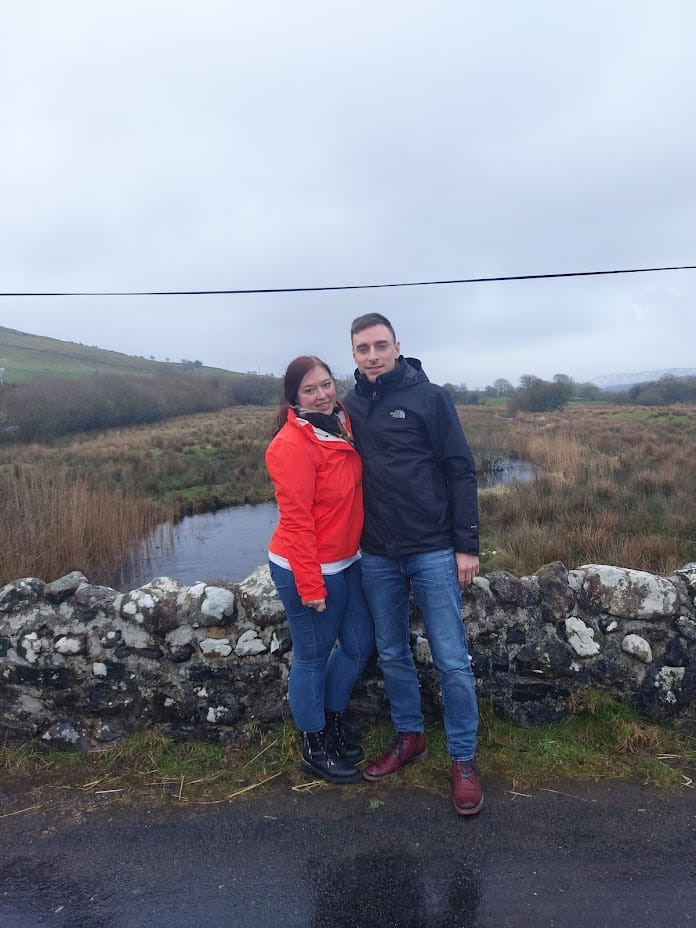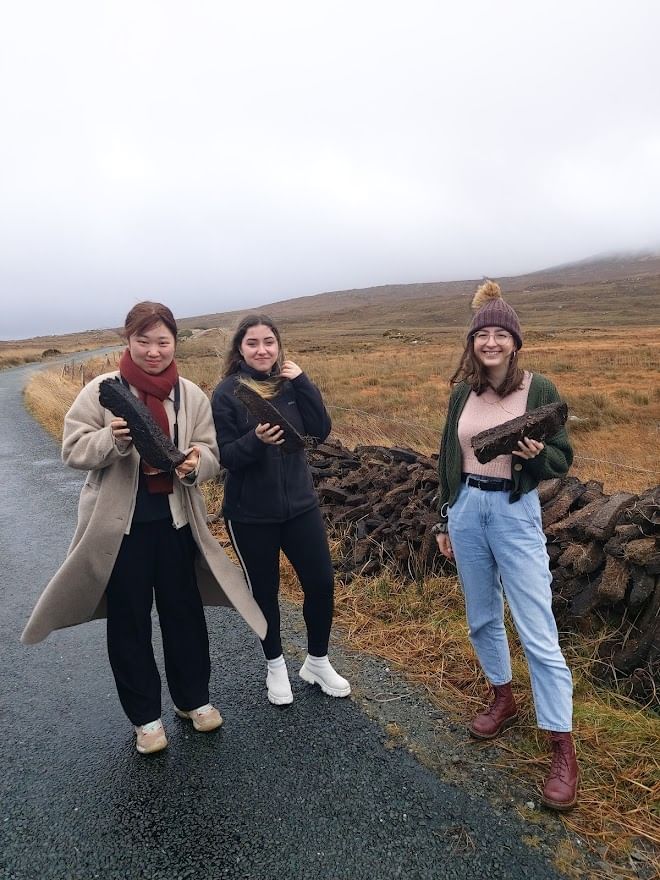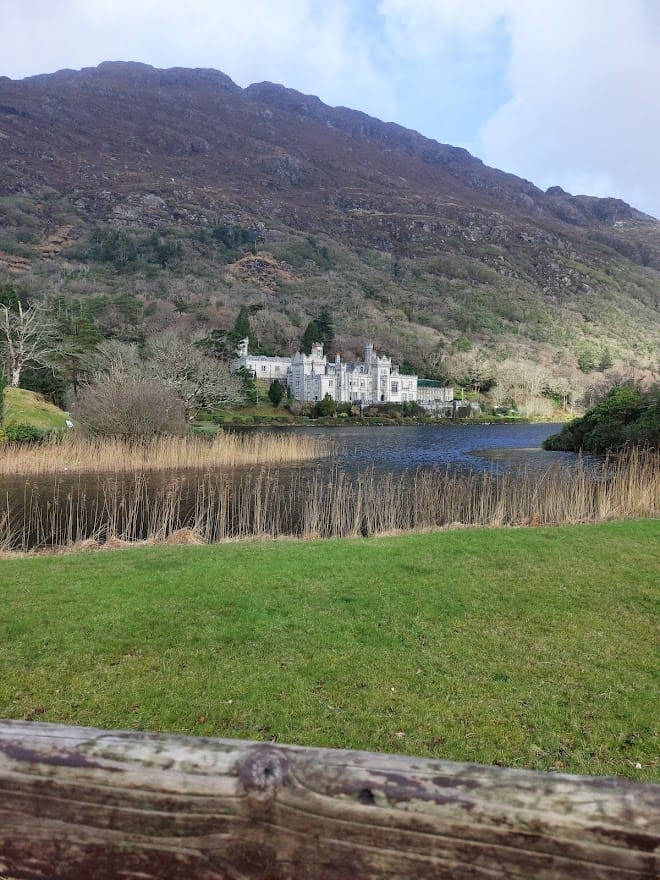Connemara Guided Day Tour with a 3 hour stop in Connemara National Park.
This tour has it all – local culture, amazing scenery, plenty of outdoors and fresh air. Your local driver/guide will teach you about the traditions, music and language of the region.
This tour operates daily from January to December, departing Galway at 09:30 and returning to Galway at 18:30.
Connemara stretches from Galway Bay in the south to Killary Harbour in the north, taking in the rugged peaks of the Twelve Bens, the gentle waters of Lough Corrib and the wild beauty of the Inagh Valley. Connemara is home to some of Irelands’ finest beaches with wide stretches of pure white sand lapped by the Atlantic Ocean.
Departing from outside the Kinlay Hostel on Merchants Road, Galway at 09:30 daily, your fully trained, local driver/guide will take you from the vibrant city of Galway (Gaillimh) out through the historical fishing village known as the Claddagh and onto Salthill, home to the famous Blackrock diving tower and the Prom.
Passing the Spanish Arch, named after the Spanish and French galleons that docked here during the Middle Ages trading era, we cross over the River Corrib, Europe’s shortest and fastest-flowing river.
Turning left into the Claddagh, St. Marys Church on your right, has been a Dominican Church for nearly 500 years.
A romantic legacy of the former Claddagh fishing village is the Claddagh Ring, the traditional wedding ring of the villagers and the ideal Galway gift or reminder of your visit to Galway.
Salthill is a vibrant area overlooking Galway Bay, the breathtaking backdrop and stunning scenery include the famous 4km long Galway Promenade offering views of Galway Bay and the Clare Hills with several small beaches separated by rocky outcrops along its length.
A local ritual is to ‘kick the wall’ at the promenade's end to signify the completion of your prom walk.
Our route to Connemara along the Wild Atlantic Way hugs the shoreline of the world-famous Galway Bay.
Set between timeless moorlands and the blue Atlantic Ocean, the coast road meanders westward through the picturesque villages of Barna and Furbo to the cheerful Gaeltacht (Irish-speaking) village of Spiddal (An Spideal).
The village of Spiddal (An Spideal) on the shores of Galway Bay is a picturesque Gaeltacht (Irish-speaking) village. It is home to many traditional thatched roof homes, scenic coastlines, and beautiful beaches and has a charming traditional appeal. Spiddal is an area which still manages to value the culture and traditions of Gaeltacht heritage.
Ireland’s second largest Gaeltacht (Irish-speaking region) is located in south Connemara, maintaining to this day a link to a different time.
Driving west along the coast road through Inverin (Indreabhan) before turning right heading for the heart of Connemara. Introducing the uninitiated to a world of marvellous boglands, picturesque lakes, rugged mountains and stunning expanses of grasslands.
The beauty of Connemara truly begins to unfold before you. Mountains start to rise in the distance and the terrain becomes dotted with lakes separated by blanket bogs and forests.
Our first scheduled stop is a photo stop at the tumbling waterfall at Screed. A chance to get out and capture some amazing images of the typical Connemara landscape, described by Oscar Wilde as a ‘Savage beauty.’
Maam Cross is a small settlement at the foot of the Maamturk (Boar’s Pass) Mountains. Situated on a crossroad, it is the heart of farming life, hosting livestock sales, farm produce markets and pony fairs.
As you head west from Maam Cross, you may start to notice traces of the long-gone Galway-to-Clifden railway here and there on either side of the road.
Your next photo stop is at Derryclare Lough, a freshwater lake at the entrance to the Inagh Valley. The majestic Twelve Bens mountain range lies to the north of the lake. The lake is popular with fishermen for both Salmon and trout and is also a popular viewpoint of the area and a great place for photo opportunities.
Pine Island lies within the lake, about 200m offshore. The trees are Scots Pine, a native evergreen tree that tends to grow tall and slender, it has red-coloured wood and tends to add a lot of interest to landscape images of western Ireland.
Your pamper stop today is in the town of Clifden, the unofficial capital of Connemara. Founded in 1812 by John D’Arcy, Clifden is nestled between the Atlantic Ocean, the Twelve Bens mountains and preserved boglands.
With brightly painted shopfronts, bars and restaurants lining the narrow streets, Clifden is a great place to find local crafts or unique special gifts.
In October 1907, a defining event in world communications took place when the first commercial transatlantic message was transmitted from Marconi’s station in Clifden to Grace Bay, Newfoundland, Canada. This message effectively launched the concept of telecommunications accessibility for all.
The 2 church spires in the town informed Alcock and Brown that they had reached the west coast of Ireland thereby completing the first non-stop transatlantic flight in 1919.
Next, we follow the Sky Road route (Wild Atlantic Way – Discovery Point) to the viewing point for panoramic views over the Atlantic Islands and to capture that perfect photo. From the Sky Road, you can marvel at Connemara’s dramatic peninsulas and shimmering coves carved by the Atlantic Ocean.
Justifiably famous for the views it affords, the Sky Road route takes you up among the hills overlooking Clifden Bay and its offshore islands, Inisturk and Turbot Island.
This looped route winds its way across the peaceful narrow country roads in the heart of Connemara.
On today's tour, you have a choice of main stop.
You can decide on either 3 hours to explore the Connemara National Park or 3 hours to explore the Kylemore Abbey and Victorian Walled Gardens.
Option One is the Connemara National Park. – 3 hour stop.
Nestled in the heart of Connemara, the park covers nearly 3,000 hectares of scenic mountains, expansive bogs, glorious grasslands and enchanting woodlands. Explore the walking trails at your own pace or set off on a challenging mountain hike towards the summit of Diamond Hill (400m).
The Diamond Hill Walk offers a challenge as well as the reward of beautiful views from the summit over the Connemara countryside and the distant islands of Inishbofin, Inisturk, Inishshark and the turreted Kylemore Abbey.
The park is home to many wild birds and animals as well as a herd of Connemara Ponies. There is a visitor centre and tea rooms where you can avail of maps, information and refreshments.
There are 4 marked walking trails, each beginning at the visitor at the foot of the mountain.
• Ellis Wood Nature Trail. – Green Route - 0.5km - Easy
• Sruffaunboy Walk – Yellow Route – 1.5km - Easy
• Lower Diamond Hill Trail – Blue route - 3km - Moderate
• Upper Diamond Hill Trail – Red Route - 3.7km – Strenuous.
The historical village of Letterfrack was built by the Quakers, John and Mary Ellis in 1849. On a crossroads, the village has several pubs, restaurants and a well-stocked grocery store. Surrounded by the beautiful National Park and its crown the distinctive Diamond Hill, Letterfrack is famous for live traditional Irish music and a very warm welcome. The Connemara heath, a low-growing evergreen shrub, adds a delicate charm to the park with its clusters of flowers ranging from soft white to vibrant rose-purple, enriching the rugged landscape.
Journey through spectacular scenery to arrive at your second main stop option today, a 3-hour stop to explore the majestic Kylemore Abbey and Victorian Walled Gardens.
Option two is Kylemore Abbey and Victorian Walled Gardens- a 3-hour stop.
Best discounted entry/admission tickets to Kylemore Abbey and Victorian Walled Gardens can be purchased from your driver/guide upon arrival – cash only.
A haven of history and serenity in an idyllic setting, Ireland's most romantic building from the late 19th century, Kylemore Abbey was originally built as a private castle in 1867 as a token of love by Englishman Mitchel Henry for his wife Margaret.
Today, the Abbey is home to the Benedictine Nuns and the 1,000-acre Kylemore estate is the perfect day trip destination.
Experience the Victorian atmosphere of the Abbey, Gothic Church and Head Gardeners House. Enjoy beautiful tree-lined avenues, nature trails and lakeside walks.
Explore the magical 6-acre Victorian Walled Garden where only Victorian varieties of flowers and vegetables are grown.
Vegetables and herbs from the garden are used in the café where traditional home-cooked food is made to the recipes of the Benedictine Nuns.
The Tea House by the walled garden is the perfect place to relax and enjoy the breathtaking views over the Connemara National Park.
Following our main stop today, you will weave your way between the majestic Twelve Bens and Maumturk mountains through the Inagh Valley. The road winds its way around the lake and every turn provides an opportunity for a breathtaking photo.
The mountain-flanked Inagh Valley is one of the most scenic valleys in Connemara. It is a romantic valley which offers breathtaking views of peatlands, mountains, lakes and glorious countryside where sheep graze freely.
Sheep farming is tied up in the identity of Connemara as your tour through the region will prove.
The valley is covered in blanket bogs, and the turf is cut by locals for fuel. Turk stacks can be seen drying on either side of the road along the way.
Our next photo stop is in the tiny village of Recess, situated on the edge of a beautiful fishing lake, Glendalough. Home to the Connemara Giant, Recess is also one of the sources of the iconic green Connemara Marble, famous throughout the world.
Connemara Marble is a rare and unique type of rock found only here. For hundreds of years, people have crafted jewellery and other items from it. Some even think it can bring good luck and happiness. Keep an eye out for Connemara Marble on your travels in the area.
Returning to Galway we pass the famous Quiet Man bridge on our right-hand side.
The final village you pass through before returning to Galway is Oughterard.
Pretty as a picture on the western shore of Lough Corrib, Oughterard is not only the gateway to Connemara, it is the main angling centre for the largest lake in Ireland, the Lough Corrib.
Tour returns to Galway City between 18:00 and 18:30.
Galway Tours to Connemara
Ready for an adventure like no other? Book your Connemara tour from Galway now and experience Ireland’s breathtaking coastal views, tranquil waterfalls, and charming villages today!



